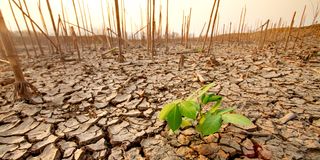The role of climate resilience in Africa's climate strategy

Resilience goes beyond adaptation to incorporate flexibility, diversity, and transformation capacity
What you need to know:
- African countries are struggling to adapt to climatic changes while also addressing existing socio-economic challenges.
- For instance, regions like the Sahel are grappling with desertification and food insecurity, while coastal cities face threats from rising sea levels.
Climate resilience refers to the ability of a system, community, or society to anticipate, prepare for, respond to, and recover from the adverse impacts of climate change.
It encompasses strategies and actions designed to mitigate the risks associated with climate-related hazards, such as extreme weather events, rising sea levels, and changing precipitation patterns.
In Africa, climate resilience is particularly critical due to the continent's vulnerability to climate change impacts, which threaten food security, water resources, and economic stability.
However, Africa is facing significant challenges in building climate resilience. The continent is experiencing an increase in the frequency and intensity of climate-related problems that disproportionately affect vulnerable populations who rely on agriculture and natural resources for their livelihoods.
As a result, many African countries are struggling to adapt to these changes while also addressing existing socio-economic challenges. For instance, regions like the Sahel are grappling with desertification and food insecurity, while coastal cities face threats from rising sea levels.
The Climate Resilience Framework (CRF) provides a structured approach for enhancing resilience against climate change. It emphasizes integrating climate considerations into development planning and decision-making processes.
The CRF outlines critical components for fostering resilience, including assessing vulnerabilities, engaging stakeholders, and implementing adaptive measures. This framework guides governments, organizations, and communities to develop tailored strategies that address their unique climate challenges.
Resilience goes beyond adaptation to incorporate flexibility, diversity, and transformation capacity. While climate adaptation and resilience are closely related concepts, they have distinct meanings. Adaptation is the adjustments made to reduce the negative impacts of climate change.
It involves changes in practices, technologies, or policies to minimise vulnerability. For example, on one hand, building seawalls to protect coastal communities from rising sea levels is an adaptation strategy.
Resilience, on the other hand, is the ability of a system to withstand shocks and stresses, recover from them, and learn from the experience. A resilient community, for instance, can cope with climate-related disasters and thrive in the face of changing conditions.
Central to understanding climate resilience are its pillars:
Threshold capacity refers to the limits beyond which a system cannot cope with stressors without significant damage.
Coping capacity is the ability to manage adverse effects in the short term through immediate responses.
Recovery capacity involves returning to a pre-disaster state or improving upon it after an event.
Adaptive capacity is the long-term ability to adjust practices and strategies in response to changing conditions.
Transformative capacity denotes the potential for fundamental changes in systems or behaviours that enhance resilience over time.
Achieving maximum climate resilience requires a multifaceted approach involving various strategies. Strengthening natural systems by restoring ecosystems such as wetlands and forests that provide essential services like flood protection and carbon sequestration is crucial.
Diversifying supply chains ensures that communities are not overly reliant on a single source of goods or services, thereby reducing vulnerability to disruptions caused by climate events. Investing in resilient infrastructure and technology is also vital and includes building roads that can withstand flooding or developing renewable energy sources that reduce dependence on fossil fuels.
African cities are increasingly adopting innovative strategies to enhance climate resilience through community engagement, nature-based solutions, and infrastructure development.
For example, in Nairobi, local authorities are implementing urban greening initiatives that involve planting trees and creating green spaces in informal settlements. This improves air quality, enhances community cohesion, and provides shade against heatwaves.
In Durban, South Africa, for instance, the city has focused on integrating nature-based solutions into urban planning by restoring mangroves along the coastline. These mangroves act as natural barriers against storm surges while providing marine life habitats.
Cities like Accra in Ghana are investing in resilient infrastructure by upgrading drainage systems to manage heavy rainfall better and prevent flooding. Community engagement plays a pivotal role in these efforts. Involving local populations in decision-making processes ensures that solutions are culturally appropriate and effectively address their needs.
Through revised policies and collaboration among stakeholders, including governments, NGOs, businesses, and communities, African cities will successfully transform into resilient environments.




